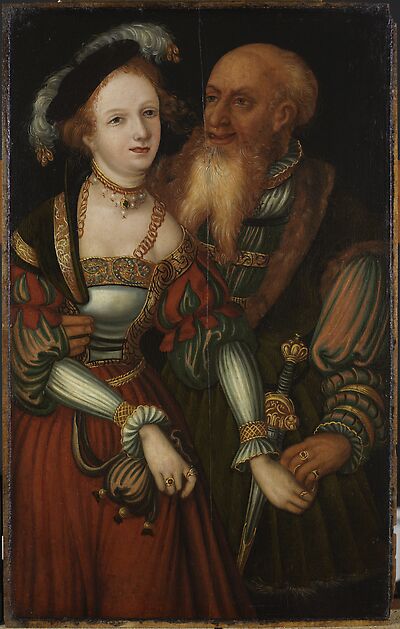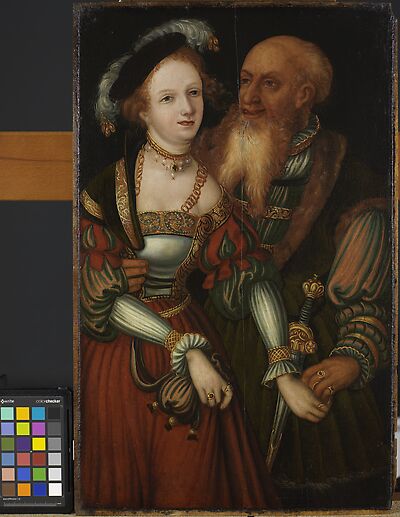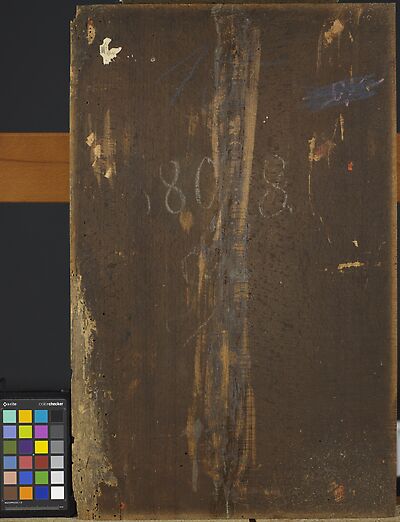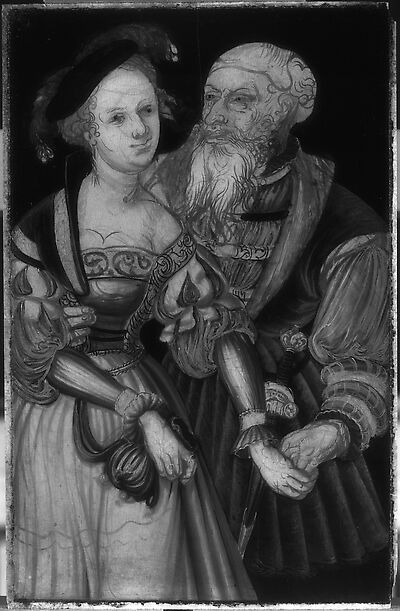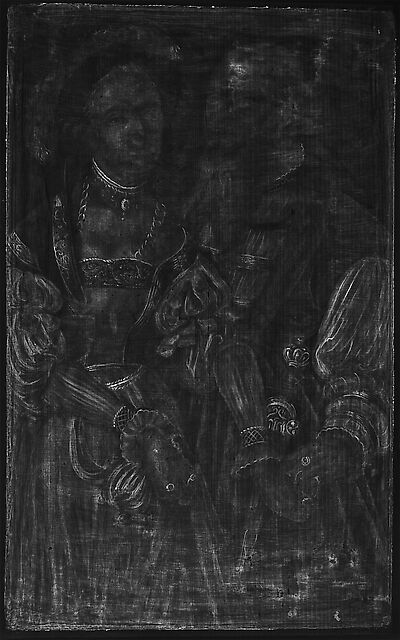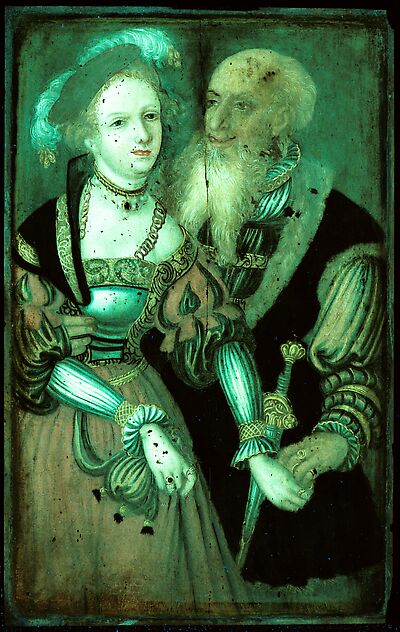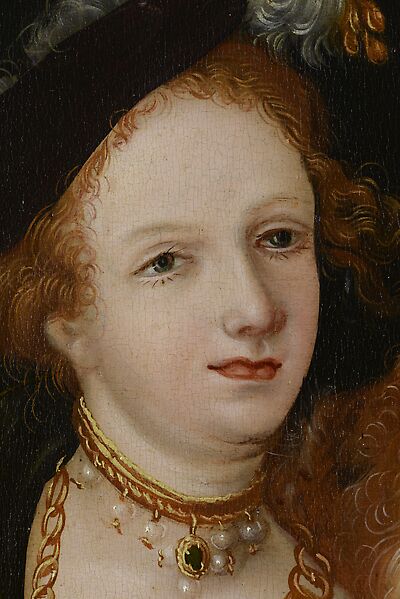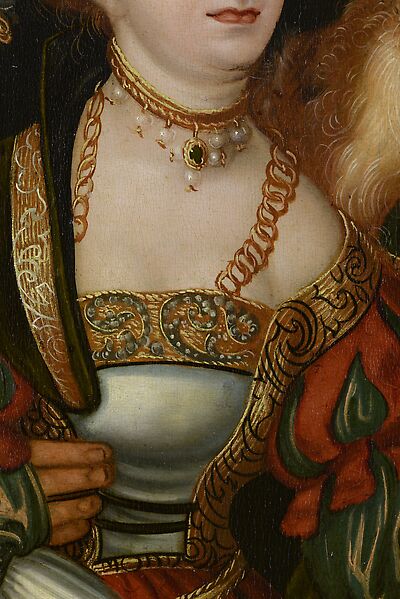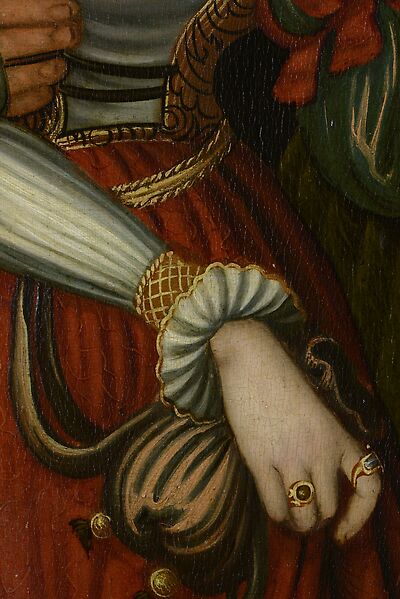Support
Methods of examination: stereomicroscope, XRF analysis (Thermo Scientific - Niton XL3t GOLDD+), X-radiography (Oehm and Rehbein, Leonardo/ Varex-Perkin Elmer XRPad2 4336), UV-light, Infrared reflectography (Osiris 900 – 1700 nm)
- a single wooden board (appears to be beech); c. 0.6 cm thick
- a tool was used to carefully smooth the reverse
- fibres were attached to the reverse along the left edge at the top and below the centre of the panel
- the panel has been chamfered along the right edge at the bottom
Ground and Imprimatura
- a thin white ground application, probably containing some lead white
- a barb is present on all four sides, suggesting the panel was fixed in an engaged frame (which hasn't survived) when the ground was applied
- under the microscope a pink layer is visible at the edge of the painting; this is probably an imprimatura containing red lead
Underdrawing
A distinctive underdrawing is visible in the infrared reflectogram executed in a black fluid medium with a brush. The detailed composition appears to be a competent freehand drawing. Numerous minor diviations are visible between the underdrawing and the final painted version. Moreover in some areas thinner lines are evident that were probably carried out using a dry drawing material (pen). This is probably the inital design that preceded the underdrawing with the brush.
Paint Layers and Gilding
XRF analysis was used to detect the following elements and by comparing their optical characteristics the pigments were identified:
Flesh paint: Pb, Ca, Fe, Hg, Mn (Zn)
Pb: lead white; Ca: chalk/ gypsum (?); Fe/ Mn: iron oxide/ ochre (?); Hg: vermilion; Zn: zinc white/ retouching / siccative (?)
Eye (white): Pb, Ca, Fe, Mn
Pb: lead white; Ca: chalk/ gypsum (?); Fe/ Mn: iron oxide/ ochre (?)
Lip (red): Pb, Ca, Hg, Fe, Mn
Pb: lead white; Ca: chalk/ gypsum (?); Hg: vermilion; Fe/ Mn: iron oxide / ochre (?)
Yellow/signature: Pb, Cu, Ca, Fe, Zn, Mn, (Sn?/Sb?)
Pb: lead white; Cu: blue with copper content/ siccative (?); Ca: chalk/ gypsum (?); Fe/ Mn: iron oxide/ochre (?); Zn: zinc white (?); Pb/Sn: lead tin yellow (?); Pb/Sb: Naples yellow (?)
The following pigments were identified in the paint layers: lead white, vermilion and iron oxide.
The results of the XRF analysis we not sufficient to distinguish between zinc and antimony in the yellow paint used for the date and signature because the paint layer was too thin. It could therefore contain either lead tin yellow, which would support a production date before 1750, or naples yellow, which would confirm a date after 1750.
For the greater part the artist used opaque paint applied with a brush in numerous layers.
[Blumenroth, Heydenreich, unpublished examination report, 19.03.2023] (translated from German, cda 2023)
